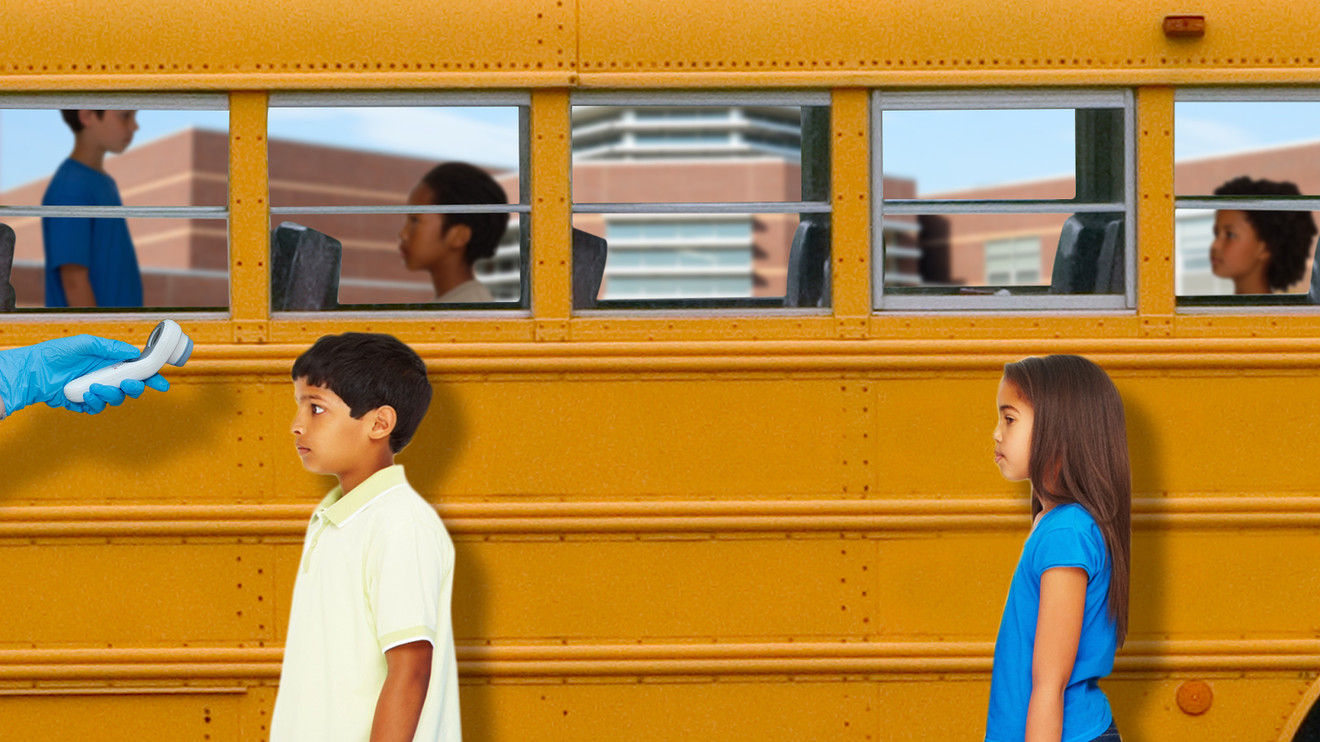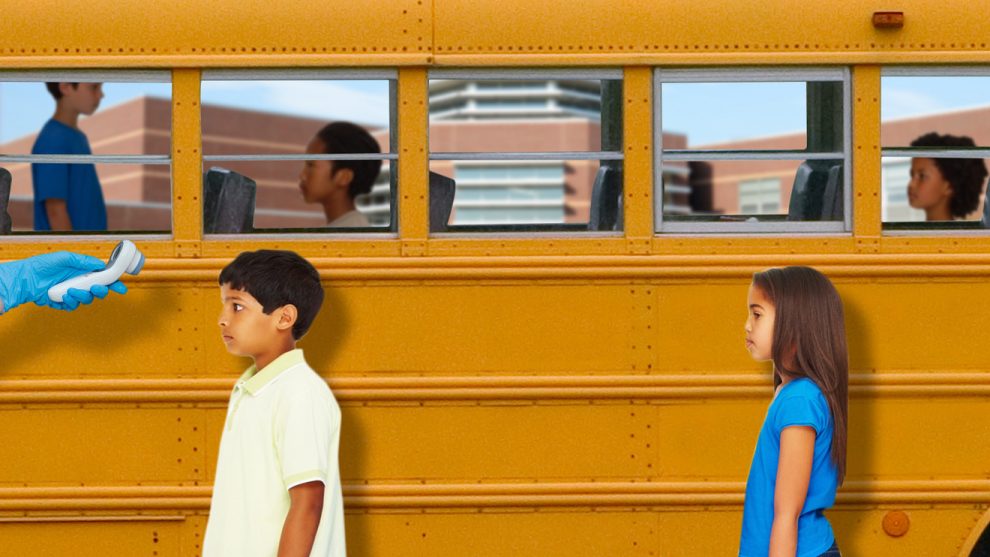
K-12 schools’ long-term future looks vastly different absent a widely available COVID-19 vaccine, advocates and educators say — but some also say the pandemic presents an opportunity to rethink how America educates its students.
With in-person classes canceled in most states for the remainder of the K-12 school year, policy makers and school districts across the country are weighing various options for when students should return and in what capacity. But most agree that returning students to school buildings safely is a complicated proposition that comes with high stakes.
“The stakes of doing it wrong is that someone dies,” Lily Eskelsen García, the president of the National Education Association, a labor union that represents more than 3 million members, told MarketWatch. “It’s not just that someone doesn’t graduate or someone doesn’t learn their times tables — someone could die.”
Working and learning inside ‘a germ factory’
Eskelsen García, a former school lunch lady and sixth-grade teacher, called schools “a germ factory” that not only put at risk teachers, counselors and school support staff, but also kids’ families. “These kids will catch it from each other, and they will take it home,” she said. “That means that they can be a danger to older brothers and sisters … their own parents, and, Lord help me, their grandparents.”
“ ‘Kids in school can quickly widen your circle of people that you’re exposed to. A lot of that is because kids aren’t as good about social distancing as adults are.’ ”
This coronavirus doesn’t appear to impact children as severely as it does other age groups. But “kids surely are a part of this pandemic,” Aaron Milstone, a professor of pediatric infectious diseases and epidemiology at Johns Hopkins Medicine, told MarketWatch. The Centers for Disease Control and Prevention say that children “can still pass this virus onto others who may be at higher risk,” and new research suggests kids can indeed transmit COVID-19.
Health officials are also investigating cases of a rare but potentially life-threatening condition in kids called pediatric multisystem inflammatory syndrome (PMIS), which could be related to COVID-19.
Once children go back to school, Milstone said, their exposure to classmates will expand their families’ social networks. No matter how careful you are in your own actions, “kids in school can quickly widen your circle of people that you’re exposed to,” he said. “A lot of that is because kids aren’t as good about social distancing as adults are.”
But physically distancing 30-some children in a regular-sized classroom won’t be feasible, said Eskelsen García, who recalled getting sneezed on and hugged when she was a teacher.
“Teachers who know how physically close it is in that classroom are saying, ‘We’re not saying we can’t do it — we’re saying it’s going to take a lot of time and it’s going to take a lot of resources,’” she said. “I think we will go back, and it will not look anything like it looked when we left that building.”
What reopened schools might look like
The American Federation of Teachers released a 22-page road map in late April for safely reopening schools and communities, starting with a decline in the number of new cases for at least 14 straight days.
“ The American Federation of Teachers released a 22-page road map in late April for safely reopening schools, starting with a decline in the number of new cases for at least 14 straight days. ”
Its recommendations included ramped-up testing and contact tracing, hand-washing stations, symptom screening for kids and staff, daily school sanitization, personal protective equipment (PPE) for teachers and support staff, and additional funding for these interventions; they also called for protections for at-risk staff and students, as well as considerations for students with underlying conditions, disabilities and special-education requirements.
The labor union laid out a number of school-reorganization solutions to promote physical distancing, including smaller class sizes; split scheduling to limit the number of students present inside the building; and staggered arrival times and meal times, with students potentially eating in classrooms. Eskelsen García said she had also heard the idea of opening schools to younger students while older kids learn from home independently.
Miami-Dade County Public Schools superintendent Alberto Carvalho, who oversees the nation’s fourth-largest school district, told MarketWatch his district was currently evaluating a number of contingency plans to keep staff and students safe, including temperature checks before boarding buses or entering buildings, gyms and auditoriums leveraged to create additional classroom space, hallways redesigned to flow one way, and mandatory hand-washing schedules. The district is building up its PPE stock in preparation, he added.
“There are so many variables right now at play that the best that rational leaders can do is take in all of the data, develop multiple scenarios, and be able to pivot to one depending on shifting conditions,” he said.
“ ‘There are some very, very creative ways that people have talked about doing this — none of them come without a big price tag.’ ”
New York mayor Bill de Blasio, meanwhile, told reporters Monday that contingencies to his “Plan A” of fully reopening schools in September included alternating days, staggered schedules and even purely online learning, according to Politico.
“All of this takes planning,” Randi Weingarten, the head of the American Federation of Teachers, told MarketWatch. “It takes planning to think through the models for physical distancing. … It takes planning to ensure that schools are cleaned [after] each of these sessions. It takes planning to make sure that you have the hand-washing stations and that you have enough PPE like masks.”
While school administrators are rightly concerned about protecting students’ health and safety and catching them up on curriculum, they must also contend with the varying degrees of trauma students will have endured from the pandemic, Eskelsen García said.
“Fear and uncertainty and anxiety over a prolonged period of time causes stress and causes trauma,” she said. “We’ll be having to deal with those mental-health issues alongside dealing with long division and where the comma goes.”
Guidance from the top
In the absence of broad COVID-19 testing for tens of millions of schoolchildren on a regular basis, school administrators will likely have to rely on other measures such as symptom screening, social distancing, hand-washing, school cleaning and other basic practices, Milstone said.
To that end, the CDC last week released a one-page series of flow charts to aid K-12 administrators in their reopening decisions, with recommendations for health and safety precautions and ongoing monitoring.
“ ‘The White House has watered down the CDC guidelines to nothing more than a flimsy flowchart.’ ”
But Daniel Domenech, the executive director of the School Superintendents Association (AASA), called the decision trees “underwhelming,” telling U.S. News and World Report that his members found lengthier CDC guidelines leaked to the Associated Press and reportedly shelved by the Trump administration to be more helpful.
Weingarten said in a letter sent to President Trump last week that educators were “still without clear guidance and support from the White House or your administration,” and asked the president to “work with us, not against us.” In a statement Monday, Eskelsen García said, “The White House has watered down the CDC guidelines to nothing more than a flimsy flowchart.”
Asked for comment on the criticisms leveled by Domenech and Weingarten, as well as on whether it planned to release more comprehensive guidelines for schools to reopen, White House press secretary Kayleigh McEnany told MarketWatch on Friday: “President Trump has issued clear, data-driven guidance on how states can reopen while acknowledging that reopening decisions ultimately rest with governors. President Trump has likewise been clear that he would like to see schools reopen in a safe manner.”
On Monday, a CDC spokeswoman directed MarketWatch to a document entitled “CDC Activities and Initiatives Supporting the COVID-19 Response and the President’s Plan for Opening America Up Again,” which she said had been updated with two new appendices.
One appendix provides additional detail on the “gating criteria” described in the president’s reopening plan, she said, while the other “is a supplement to the decision trees released May 14, listing specific practices that schools and other settings may find helpful at particular stages of the COVID-19 outbreak.”
“These critical resources complement other guidance CDC has previously released to help communities plan for, respond to, and recover from COVID-19,” the spokeswoman said. “CDC will continue to update these resources to help state and local leaders as they implement, adapt, and adjust COVID-19 mitigation strategies in their communities.”
These plans won’t come cheap
Plans to keep students educated while preventing the spread of COVID-19 will also require money, said Eskelsen García, whose union is advocating for legislation to increase funding for public schools. “There are very few public schools that have a lot of empty classrooms or empty spaces and class sizes of a dozen kids,” she said. “There are some very, very creative ways that people have talked about doing this — none of them come without a big price tag.”
In an April 28 letter to congressional leaders, superintendents from 62 major city school districts called for additional funding for public school systems in the next COVID-19 relief bill, citing “significant revenue shortfalls” on the horizon for local school districts.
“ K-12 schools’ potential new normal could also exacerbate existing inequalities between rich and poor school districts. ”
Carvalho, one of the letter’s signatories, said he was “concerned” about funding during a time when his district needed to invest in extra protections for students and staff.
“We are dealing not only with the possibility of an economic recession with significant loss of revenues that fund education, but we’re dealing at the same time [with the fact] that we have to spend additional resources on protective measures to deal with a health crisis,” he said.
K-12 schools’ potential new normal could also exacerbate existing inequalities between rich and poor school districts, said Julian Vasquez Heilig, the dean of the University of Kentucky’s College of Education, as “recent school finance research has established that rich and poor districts already have hundreds millions of dollars in inequity in terms of funding from all sources.”
“The availability of resources in rich and poor districts directly impacts the ability of the district to offer smaller class sizes in socially distanced classrooms, flexibility of facilities for alternative modes of instruction, availability of technology for distance learning and alternative modes of instruction, availability of PPE for students, staff and faculty and most other circumstance related to COVID-19 responses,” Vasquez Heilig told MarketWatch.
Carvalho said he was also concerned about students whose parents’ jobs prevented them from being able to supervise their kids during the day for remote learning, as well as food-insecure children who relied on school meals.
How COVID-19 could change K-12 schools in the long run
The crisis presents “an unfortunately good opportunity for us to rethink education,” said Yong Zhao, a distinguished professor at University of Kansas’s School of Education, with a shift away from standardized testing and a greater emphasis on supporting students’ individual growth.
Carvalho, meanwhile, said “there’s no going back to the way things used to be” — predicting the education system would become far more personalized, adaptive and flexible to students’ and families’ needs. Some parents might decide to send their kids to school for the full school day, he said, while other families might decide distance learning works well for them, and still others might opt for in-person instruction on alternate days.
“There will be traditional schooling side-by-side with multiple options that reflect the wants and wishes of parents, learning modalities of kids, and blended and hybrid learning environments across the board,” Carvalho said. “While we may have some concerns about it — and I certainly do — there is also an opportunity here.”





